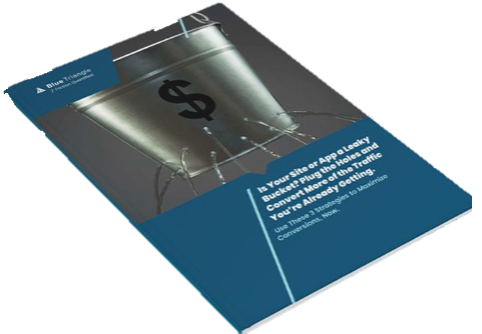Are you meeting your customers where they are?
With the average global internet user spending almost 7 hours online each day, providing a frictionless digital experience is crucial for the success of any application or product.
However, biases in development processes can pose challenges for developers and product managers.
Developer bias, influenced by ideal conditions in the development environment, and product bias, driven by the need to validate hypotheses rather than test them, can lead to digital friction and impact user satisfaction.
What is Developer Bias?
Developer bias is the tendency of developers to craft products and experiences within the confines of their own ideal environments.
Picture this: developers equipped with top-of-the-line devices, lightning-fast internet connections, and an array of resources at their disposal. However, this ideal setting is not the reality for many users.
Not everyone enjoys the luxury of high-end tools or seamless connectivity.
The disconnect between developers' environments and what users actually experience can cause unintended friction.
So what may seem like a flawless experience in the developer's world may falter when exposed to the diverse conditions users encounter, factors such as varying network speeds, outdated hardware, or concurrent applications running in the background.
Bridging this gap requires developers to acknowledge and accommodate the diversity of user experiences beyond their own.
Mitigating developer bias demands a shift from the pristine "clean room" development environment to a more holistic approach. Developers must actively simulate real-world conditions and prioritize optimizing products for the broad spectrum of user scenarios.
This entails leveraging tools and techniques to emulate diverse environments, ensuring products remain robust and accessible across different setups.
What is Product Bias?
On the flip side, product bias introduces another layer of complexity and possible friction.
Rooted in a scientific way of thinking, product bias steers developers towards proving preconceived hypotheses rather than objectively testing them. This predisposition can lead to the accumulation of unnecessary features or bloated product offerings, ultimately cluttering the user experience.
Imagine a product laden with features; each meticulously added to fulfill perceived needs without thorough validation.
The result?
A tangled web of functionality that overwhelms users and obscures your products’ core value proposition. This phenomenon, known as product or feature bloat, contributes to digital friction, hindering users' ability to navigate and derive value from the product.
Addressing product bias necessitates a shift towards a more pragmatic approach. Instead of assuming user needs, developers must adopt a mindset of continuous testing and validation. By prioritizing user feedback and data-driven insights, teams can streamline products, focusing on features that genuinely enhance the user experience while discarding those that detract from it.
3 Strategies to Overcome Developer Bias and Product Bias
Tackling bias in digital product development requires a multi-faceted approach. Leveraging analytics and user feedback is a cornerstone for identifying and rectifying friction points. However, it also entails a cultural shift that encourages humility and a willingness to challenge entrenched assumptions.
Here are 3 ways to tackle these biases and ensure a smooth user experience:
- Embrace Real-World Testing Environments:Developers often work in optimal conditions, which may overlook real-world user challenges. Prioritizing testing in diverse environments mimicking real-world conditions, including different network speeds and devices, provides valuable insights into potential friction points for proactive resolution.
- Adopt a Test-Driven Approach: Combat product bias by focusing on objectively testing hypotheses. Conduct user testing, gather feedback, and iterate using real-world data to enhance usability and satisfaction, avoiding feature bloat.
- Utilize Analytics for Continuous Improvement:Leverage analytics to identify and address biases. Gain insights into user behavior, preferences, and pain points to make informed decisions and track feature performance in real time for quick adjustments based on feedback.
And here's a bonus. Every website click and mobile app interaction holds the promise of converting a user or losing their business and loyalty.
So it's not just about analyzing data or mapping out the customer journey; it's about immersing yourself in the experience, feeling their pain, and sharing in their joy.
How can you achieve the goal of delivering a frictionless and memorable experience for every customer without firsthand knowledge of the friction they face?
Take the time to step into your customer's shoes and navigate through your live website or mobile app. Experience the journey from start to finish from the customer's perspective. Doing so will give you invaluable insights that traditional analytics and testing can't provide.
Completing your own customer's journey isn't a one-time task; it's an ongoing practice rooted in empathy and curiosity. Each day brings new opportunities to uncover conversion and revenue opportunities, iterate on improvements, and elevate the overall experience for your customers. It's a journey of continuous experience optimization, learning, and growth, fueled by a relentless commitment to putting the customer first.
This user-centric approach to overcoming developer and product bias not only enhances user satisfaction but also drives conversions, revenue, and customer loyalty.

During the holiday rush, every shopper matters
Optimize the customer journey before the eCommerce event of the year.

.jpg)

